Nib manufacturing
Except for the Japanese market, more often than not fountain pen nibs are not produced by the pen manufacturers themselves but one of three German companies: Bock, JoWo or Schmidt. They churn out nibs on an industrial scale.
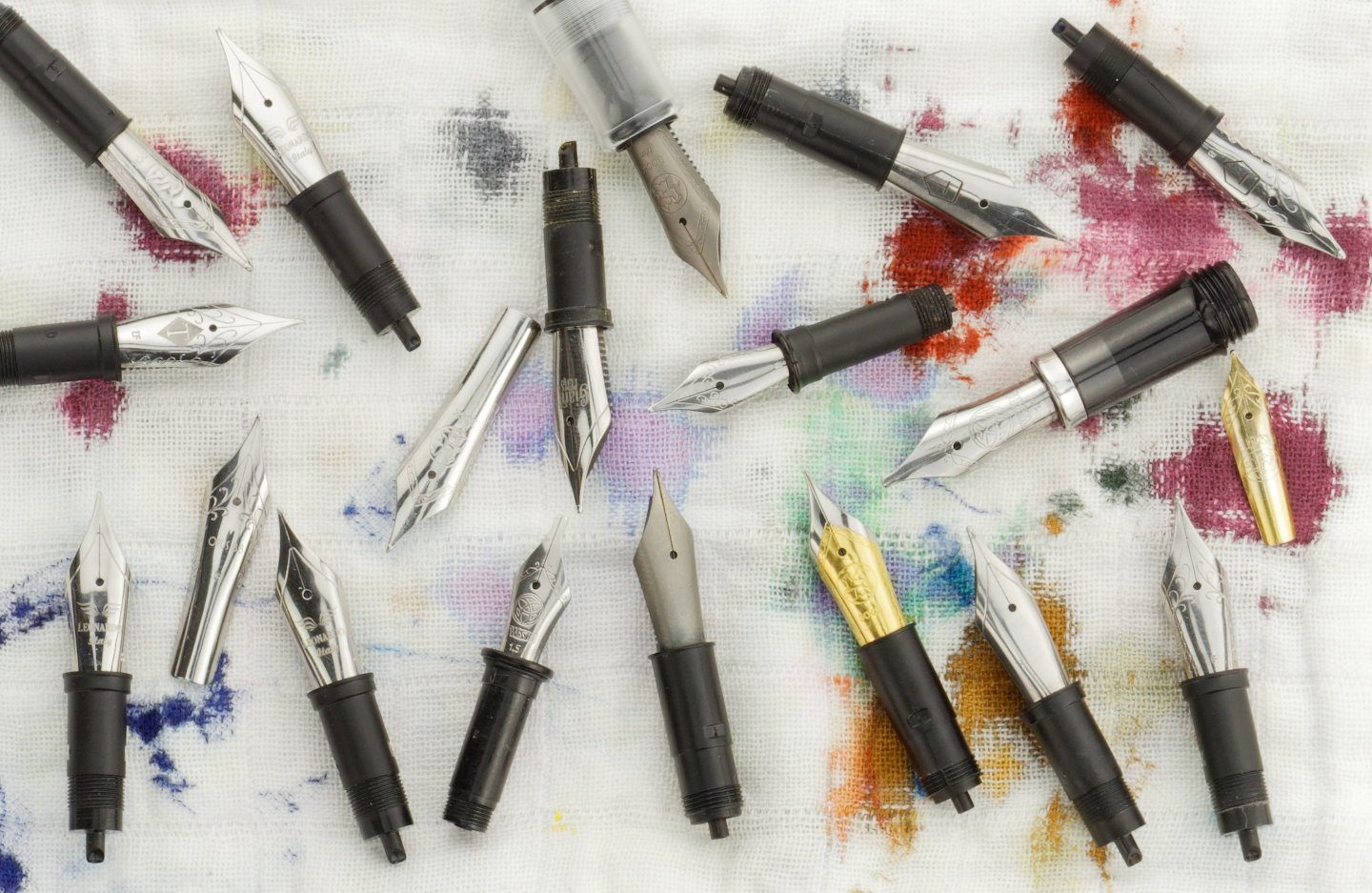
Making nibs is a precision process, needs special equipments and rigorous quality assurance. Some well established companies with a long heritage have their own facilities where they produce excellent nibs, like Montblanc, Aurora, Lamy and Rubber🔗maid🔗 does. Some fountain pen manufacturers acquire the old machines of companies long past, like how Santini got Ancora’s apparatus🔗 (AFAIK). There can be a considerable amount of manual labour involved, especially when it comes to higher priced pens with gold nibs. No wonder that most fountain pen makers either cannot afford to or has no wish to have in-house nib manufacturing capabilities. See for example Conklin who switched from in-house nib production to sourcing nibs from JoWo🔗. To make in-house nibs is certainly not the same as making in-house watch movements but it does have its prestige in the fountain pen community. Leonardo just recently announced to begin manufacturing their own gold nibs.
When it comes to small independent pen makers, in almost all cases you get either JoWo or Bock nibs and you are limited to what these two companies offer. (I must add that these independent small companies almost always hand tune the stock Bock and JoWo nibs so you’re far better off than with bigger pen manufacturers sourcing nibs from the same place. And it’s not the stock Bock or JoWo steel nib for which you buy the pens of independent makers anyway.)
Everybody has different priorities in the fountain pen enthousiast community. There are those of us for whom the nib and the writing experience is of crucial importance. We value those, who manufacture their nibs in-house at a consistently high quality.
Handmade Opus Cineris nibs
Having all these context laid out in an overly extensive manner, you can understand now how unique and special it is, that Anabelle Hiller released🔗 her first batch of hand made nibs.
She doesn’t use power tools, but does everything by hand: cutting the gold sheet, soldering the tipping material, hand sawing the slit, forming the nib, hand hammering / engraving embellishments and making the final nib grind. This is truly unique, nobody in the world makes nibs this way. While Anabelle was working as a nibmeister at Appelboom she graduated as a master goldsmith. Combining her skills and experience led to developing her own nibs. She has been spending an immense amount of effort on research & nib design. Several designs were tested and feedbacks gathered from those who were involved in the process. You can see the massive effort that was required from Anabelle to realise her own first batch of ten gold nibs.
Bespoke nibs
I was immediately interested in her project and got to be one of the lucky few who received an Opus Cineris Harmonic Nib. Each of these nibs were ground to the specific wishes and writing posture of the client. You cannot get a nib any more bespoke than this.
I went with a “boring” fine nib, but asked that it should write as an extra fine on reverse. The video in my previous post is in fact was based on the one I got from Anabelle. She provided a writing sample and asked for feedback so that she could finalise the grind and fine tune the nib.
Unboxing and first impressions
Today I finally went to Appelboom to meet Anabelle in person and to pick up my very own Opus Cineris Harmonic Nib fountain pen. She made a few photos while I was unboxing the pen.
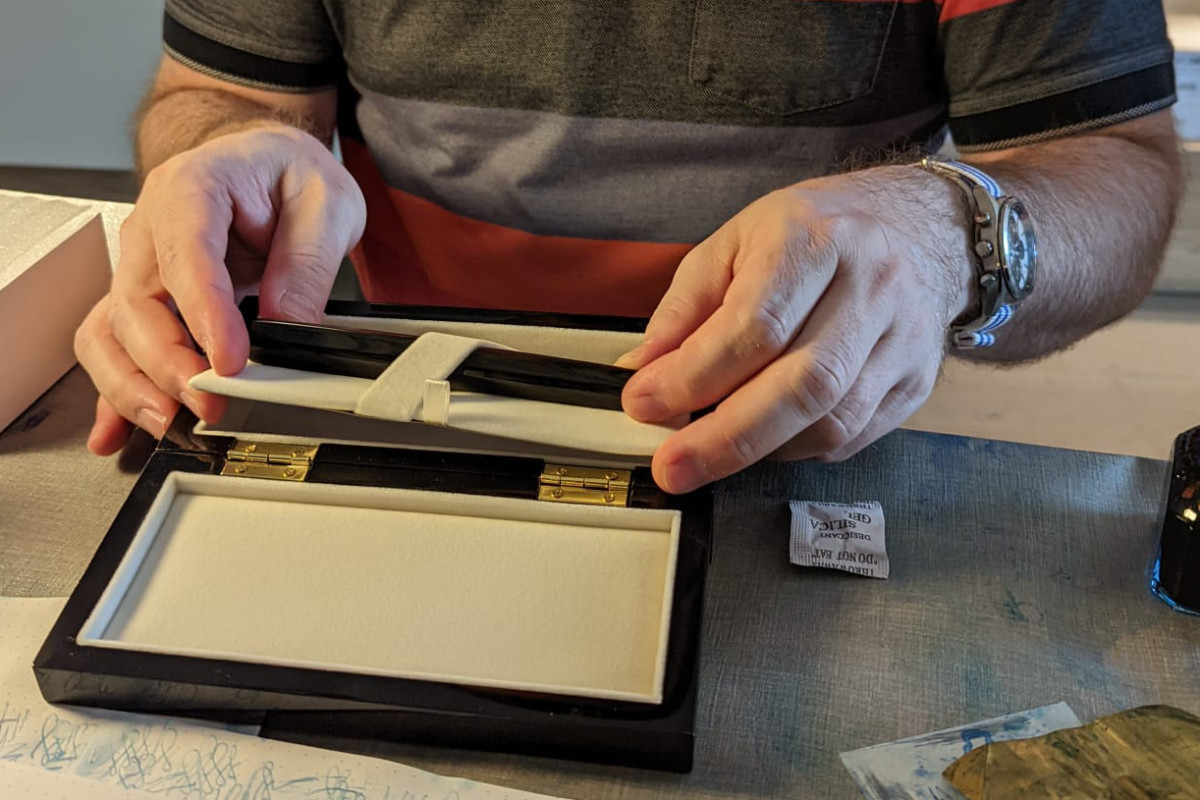
![Trying out reverse writing [using the (in)famous Diamine Majestic Blue ink]](/assets/blog/2022/08/31/opus_cineris_unboxing_1.jpg)
The pen comes in a high quality piano black lacquered gift box. For those of us who are overwhelmed by the huge gift boxes some other manufacturers use to present their limited edition pens (yes, I’m looking at you Aurora), it’s a pleasant change to see a box of this reasonable size. The magnetic closure is a nice feature and the lack of a visible locking mechanism provides an elegant and subdued presentation that matches the pen well.
The pen body was made in collaboration with Giants' Pens🔗. It’s a classic, slightly tapered pen shape that has conical ends on both sides. The material is a truly elegant black ebonite with subdued grey ripples. The build quality and the polishing is absolutely immaculate. The cap is a screw down cap, underneath a slightly tapered section that flares out nearing the nib. The filling system is standard international cartridge / converter.
The size of the pen is around the size of a Pelikan M800, Visconti Homo Sapiens or a Pilot Custom 823. (Capped: 145 mm / 26 g, uncapped 132 mm / 19 g, section diameter at its thinnest is 11.8 mm.)

Nevertheless the main feature is the amazing 14kt gold #6 size nib sitting snugly on an ebonite feed. Immediately noticeable are the additional second gold layers on the outer edges of the tines. These are beautifully decorated using a hammering technique. They look spectacular when inky.
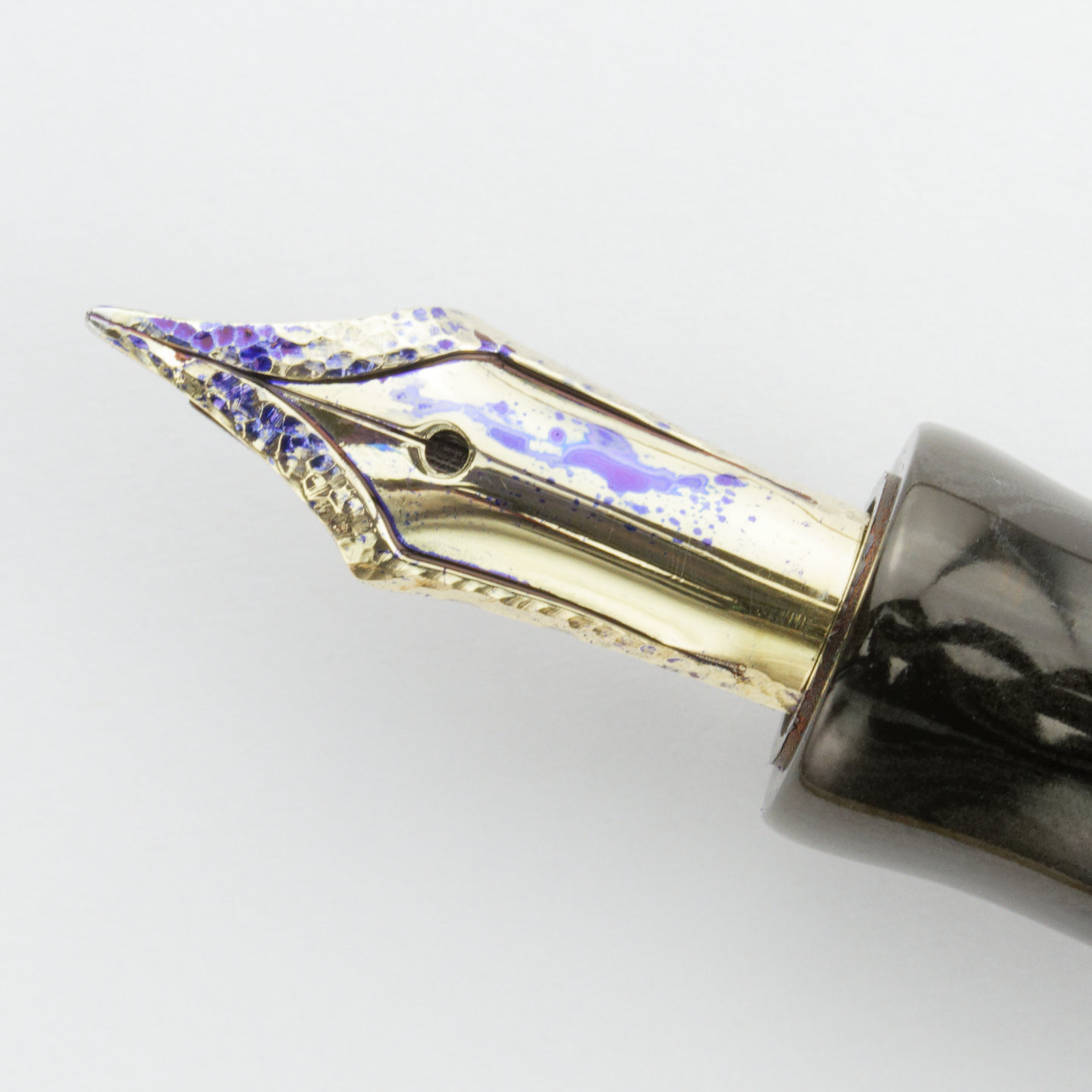
Should you take a good look at those extra gold layers on the side, you may notice that there is a gap between the main nib body and the top layers. These layers are soldered to the nib body only at their ends. Therefore utilising the capillary action, some ink is stored between the two gold layers as well. This extra ink buffer further helps to achieve a smooth ink flow — even when writing on reverse for a more extended period.
Writing experience
The nib is exceptionally smooth. It’s neither too stiff, nor too soft, just very pleasant. The nib is not a flex nib but has some give and you can squeeze out a little line variation. I asked Anabelle to tune my nib to be a bit more on the wet side. I’m rather satisfied with the result which is about 6/10 on the wetness scale.
The ebonite material feels pleasing to touch. The shape and size of the section is so comfortable as if it were made to fit my own hand. The threads are far back enough that you probably won’t have any contact with them and neither will you feel the step up to the barrel. The pen is light and the balance feels good.
Reverse writing was one of the features I explicitly asked for. In an everyday work or study situation you are probably not in full control of the paper quality. To counter feathering and bleed through on cheap paper, you can reduce the amount of ink being put to the paper by reverse writing. Most pens are not designed for that and they perform rather poorly, the nib usually runs out of ink just after one or two words. However this pen reliably writes as an extra fine on reverse as long as you wish. The writing experience is pretty good on reverse as well.
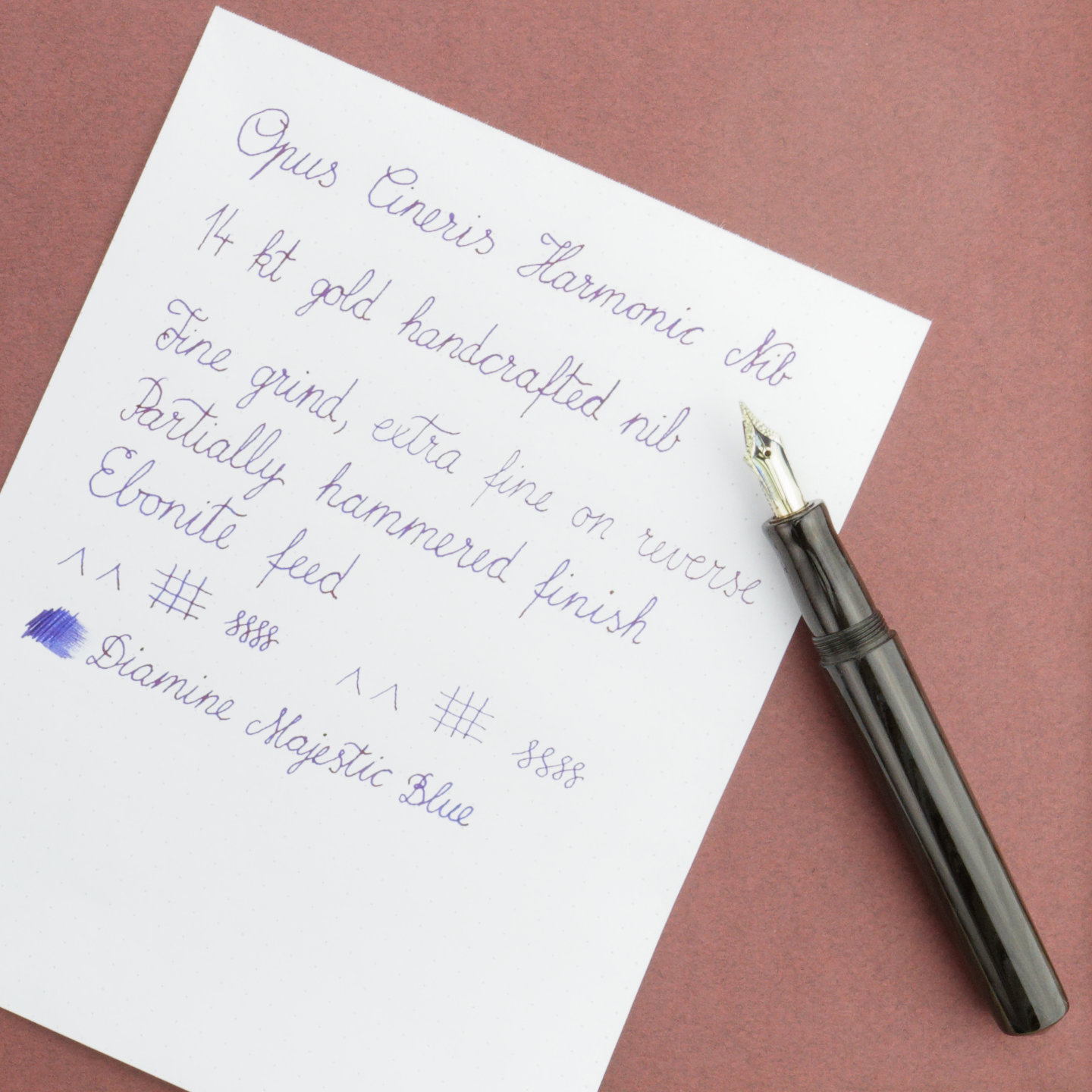
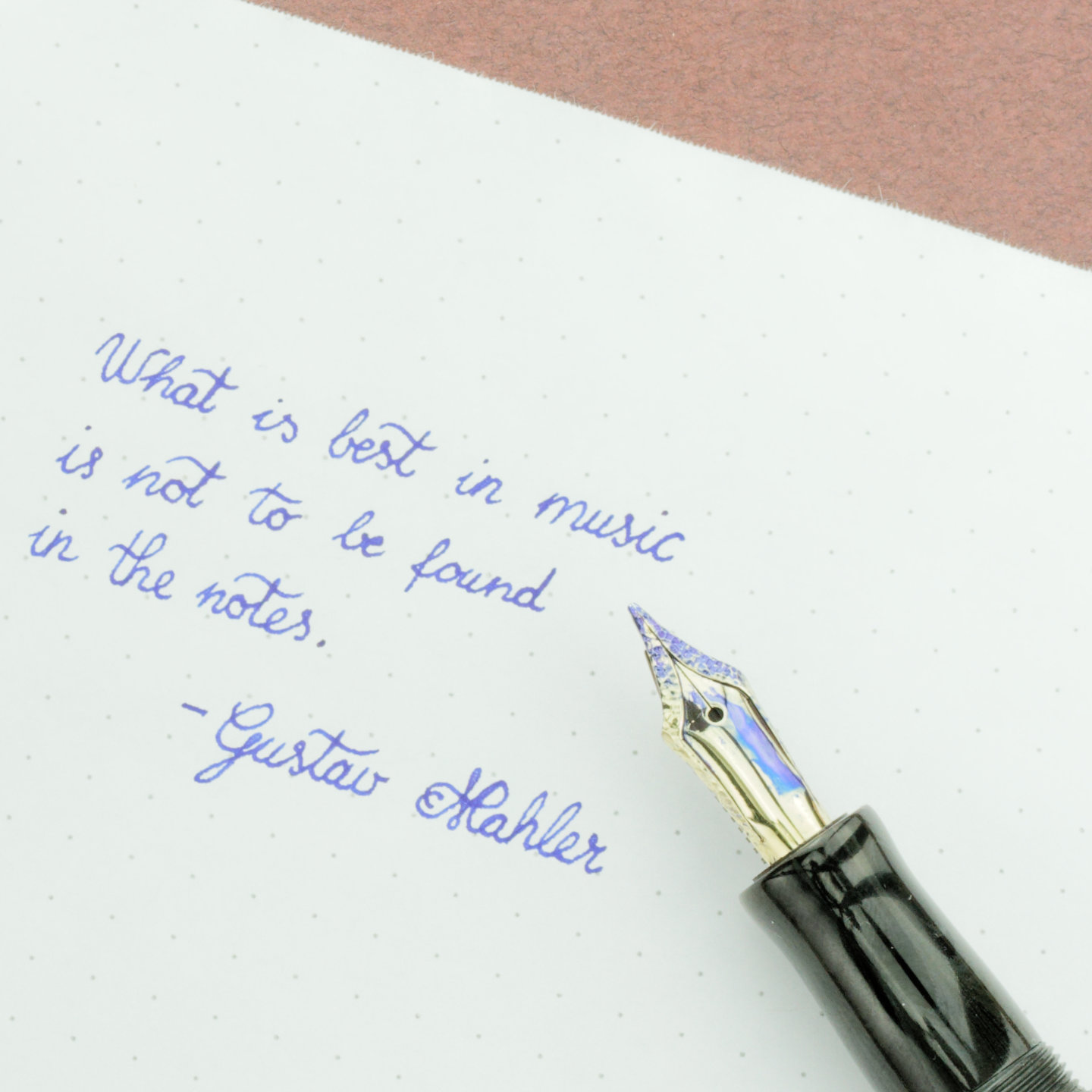
Final thoughts
This nib and pen is truly a masterpiece in every sense of the word. (And yes, Anabelle’s masters’ mark is stamped into the base of the nib.) It’s hand made and bespoke, looks beautiful, elegant & refined and performs flawlessly. This is something truly unique.
The story has a personal side for me as well. I’m happy for Anabelle that she managed to accomplish this huge achievement. It’s great to witness her career as an artist and master craftswoman advance. And now I got a memento of her growth which makes this pen even more valuable for me. I wish her – and of course the Giants as well – a lot of success and I can’t wait to see what they are up to next.
Stay tuned for more opus-cineris-the-harmonic-nib-series photos.
Note: Aziza (Gourmet Pens) has made two reviews on the new Opus Cineris nibs, which you can find on Youtube here🔗 and here🔗.